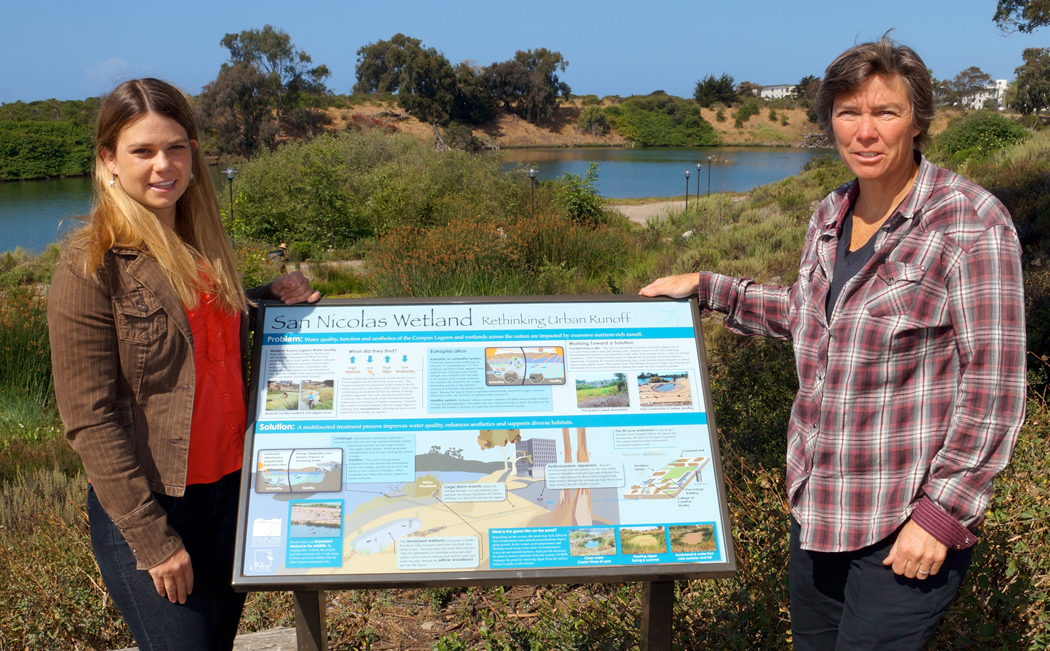
What do stormwater management, whale migration, and inner peace have in common? They're the subjects of a few of the newest interpretive signs around the UC Santa Barbara campus. Eight new interpretive signs now exist to inform visitors and answer common questions as they travel through different parts of the campus designated as natural areas.
"We hope that our readers will be inspired to value our natural resources, learn how to care for and manage those precious resources through the signs," said Lisa Stratton, director of ecosystem management at the UCSB Cheadle Center for Biodiversity and Ecological Restoration.
The new signs are located at various places, and discuss a diversity of subjects: two at the Campus Lagoon talk about the Labyrinth and San Nicolas Wetland; while three signs on vernal pools, whale migration, and bioswale function can be found at the Manzanita Village. The final three signs, located at the corner of Los Carneros and El Colegio Roads, celebrate the completion of the San Clemente Stormwater Management and Habitat Restoration Project, and include the natural history of the project area and insights into the ecological complexity supported by a rare annual sub-shrub known as the Southern Tarplant.
The eight new signs join nine existing signs for a total of 17 interpretive signs around campus, each a unique part of an ongoing effort to educate staff, students, and visitors to UCSB. The signs, which take about six months from concept to final production, were funded by Associated Students, Coastal Fund, and UCSB's Housing and Residential Services.
"These signs help people interpret the natural world around campus, which contains excellent examples of a diversity of restored and natural habitats," Stratton said.
The signs, she added, demonstrate what is being done to manage the habitats and help people to value California's natural resources. "Because UCSB is a learning institution set in such a unique coastal environment, we felt it was particularly important to help interpret these remnant examples of native habitats and techniques for managing the impacts of development on natural resources," she said.
One more sign on wildlife and upland habitats is in the works at Manzanita Village, and the new Ocean Meadows wetland restoration project may require some interpretive signage, Stratton said.
Related Links



